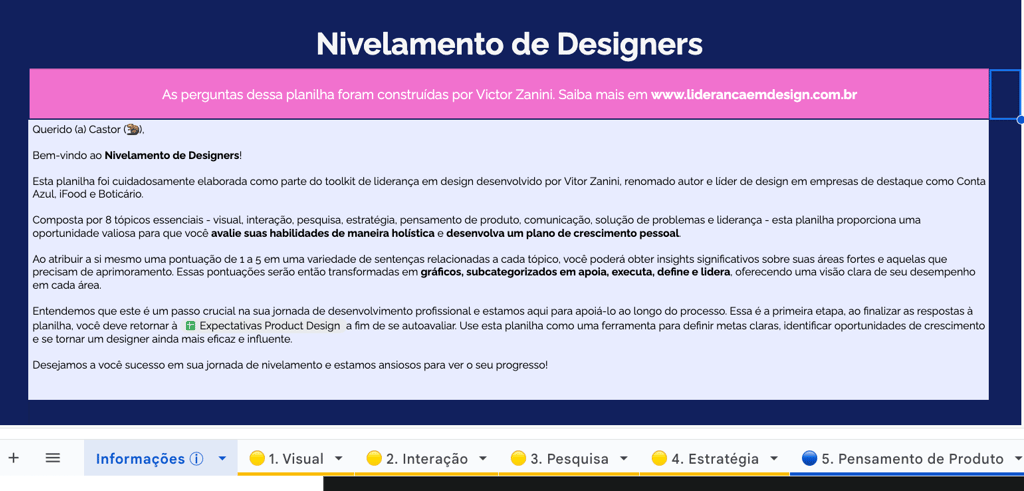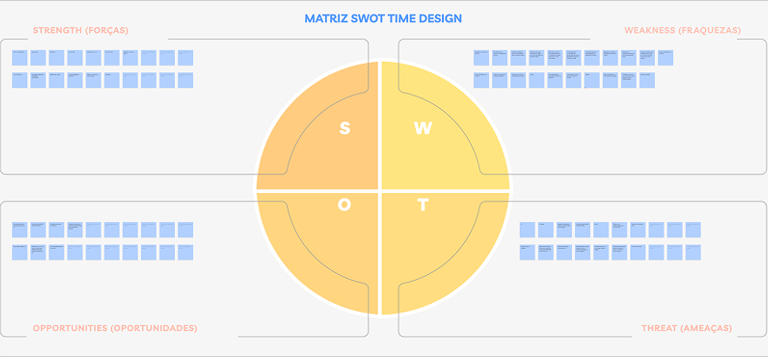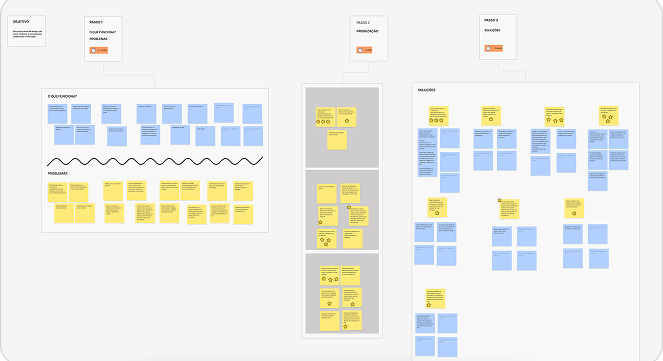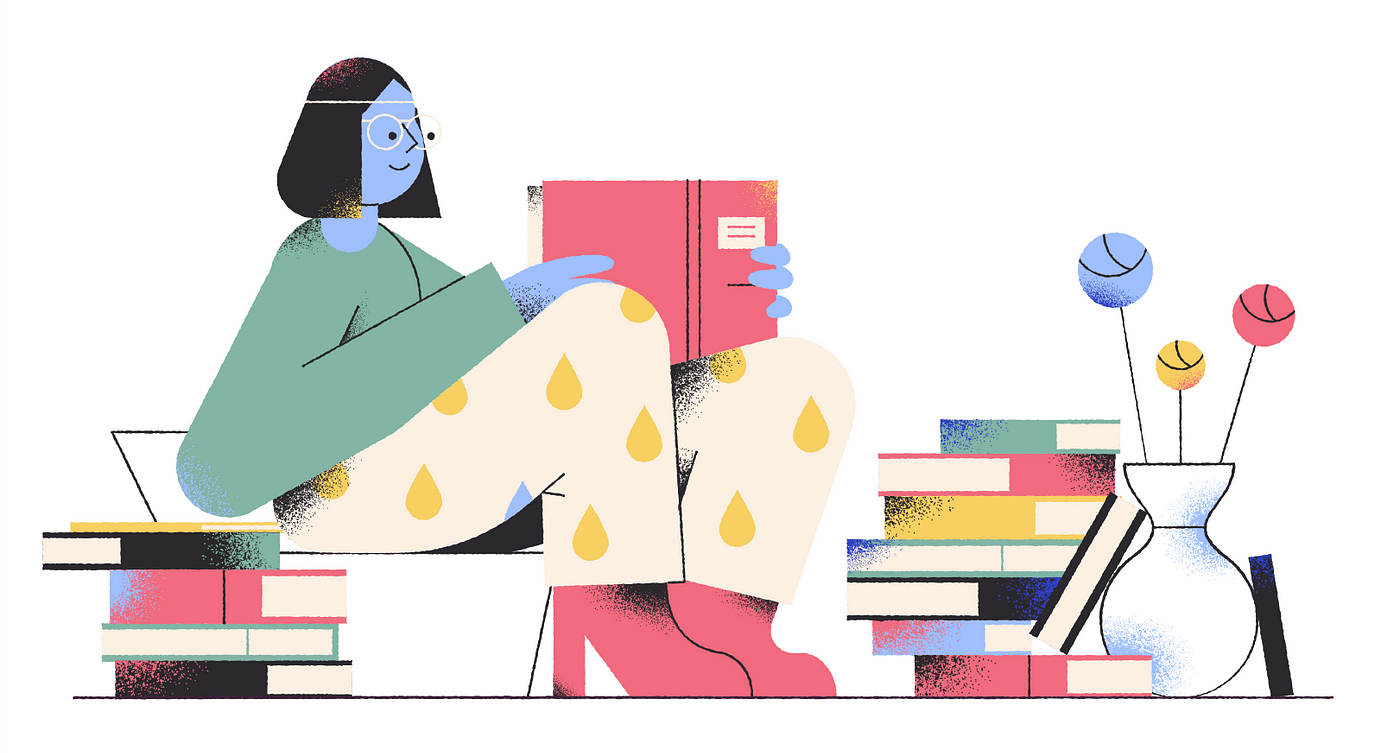Designer Growth: A Journey of Continuous Development
Every design team needs two things to truly grow: space to evolve and clarity on how to get there. Sounds simple — but in practice, creating an environment that fosters continuous development takes active listening, genuine collaboration, and well-grounded decisions.
With that in mind, I teamed up with two amazing colleagues to lead an internal initiative aimed at rethinking how we track and support our designers' growth. Our goal was straightforward: build a structure that gave each person on the team visibility into where they are in their journey — and real direction on how to move forward.
This is the story of how we made it happen.
Listening First: What the Market — and Our Team — Had to Say
Before designing any structure, we knew we had to listen. Not just to best practices in the market, but to the people on the ground: our own team.
We interviewed leaders from companies like Nubank, Claro, Dell, and BT Group to understand how they approached team development. We wanted to know what worked, what metrics mattered, and how they managed to build a culture of continuous growth.
In parallel, we ran a Lightning Decision Jam with our team and used the CSD Matrix (Certainties, Suppositions, Doubts) to organize our assumptions. These activities surfaced important — and sometimes unspoken — issues.
Recurring themes included the need to strengthen design’s strategic role in the company, improve user research skills, enhance internal communication, and bring more clarity and accessibility to recognition and growth processes.
Subtler concerns also emerged — such as the emotional impact of uncertainty, project concentration around a few clients, and a misalignment between career expectations and organizational structure.
These insights were critical. They didn’t just validate our mission — they shaped our solutions.
From Insights to Action: Turning Feedback Into Frameworks
Armed with all this input, it was time to build.
We created two simple but powerful tools:
The Designer Leveling Sheet: A tool to objectively map where each designer is in their journey. It includes clear criteria across different competencies and helps spot patterns and growth opportunities. It’s not about labeling — it’s about self-awareness and better conversations.
The Growth Expectations Matrix: This framework outlines what’s expected at each career stage. It brings clarity, supports feedback and development conversations, and helps both designers and leaders align on what growth looks like.
We introduced these tools gradually — in feedback cycles, 1:1s, and team rituals. The language was accessible. The criteria were validated with the team. And the usage was flexible, allowing each person to engage in their own way.
Rather than box people in, our goal was to illuminate possibilities.
After the first internal survey post-implementation, we saw a pattern: most team members felt more confident about their growth journey — and for many, it was the first time they had real clarity on what they needed to develop.
These tools didn’t solve everything — and they weren’t meant to. But they gave us a shared starting point. A common language around growth.
And that alone was a huge leap forward.
Measuring Impact: What the Data Told Us
To understand the real impact, we surveyed the team after rolling out the tools. The results were clear:
85% felt more confident about where they were and where they wanted to go
78% said the expectations matrix helped them focus their development
Most importantly, the number of meaningful growth conversations increased significantly in the two months that followed
Beyond the numbers, we saw a cultural shift: “growth” stopped being a taboo or something that only happened in formal reviews. It became part of everyday conversations.
Key Learnings From Industry Leaders
Talking to leaders from companies like Nubank, Claro, Dell, and BT Group opened our eyes to practices that go beyond structure — they build culture, trust, and autonomy. Some of the most valuable takeaways:
Design Critique as a continuous improvement ritual
Internal learning sessions (talks and workshops led by team members)
Peer mentoring as a way to build trust and support growth
Frequent self-assessment paired with manager reviews
Personality tests (like 16 Personalities) to foster better leadership alignment
Team SWOT analysis to guide collective strategy
Clear performance metrics tied to regular evaluations
Design Ops structures to improve rituals, tools, and alignment across teams
Team Canvas workshops to align values, goals, and expectations
These insights reinforced a key truth: growth doesn’t happen in a spreadsheet — it happens in relationships, rituals, and culture.
A Call to Keep Going
This project wasn’t the end — it was a beginning.
A new way to talk about growth. A new lens on what it means to evolve — as designers and as a team.
We know development is a never-ending road. What we built is a living foundation that needs to be revisited, adapted, and nurtured over time. There’s no one-size-fits-all — and that’s okay. What matters is moving forward with intention, curiosity, and care.
So here’s our invitation: don’t let the movement stop.
Let others take ownership of these tools. Let new rituals emerge. Let structures evolve with the team. Let growth stop being an isolated initiative — and become part of our daily culture.
Because when we grow together, the impact goes far beyond our outputs.
It touches our relationships, our team spirit, and the future we’re building — together.
And that’s why we keep going: with clarity in the present and commitment to what’s yet to come.







